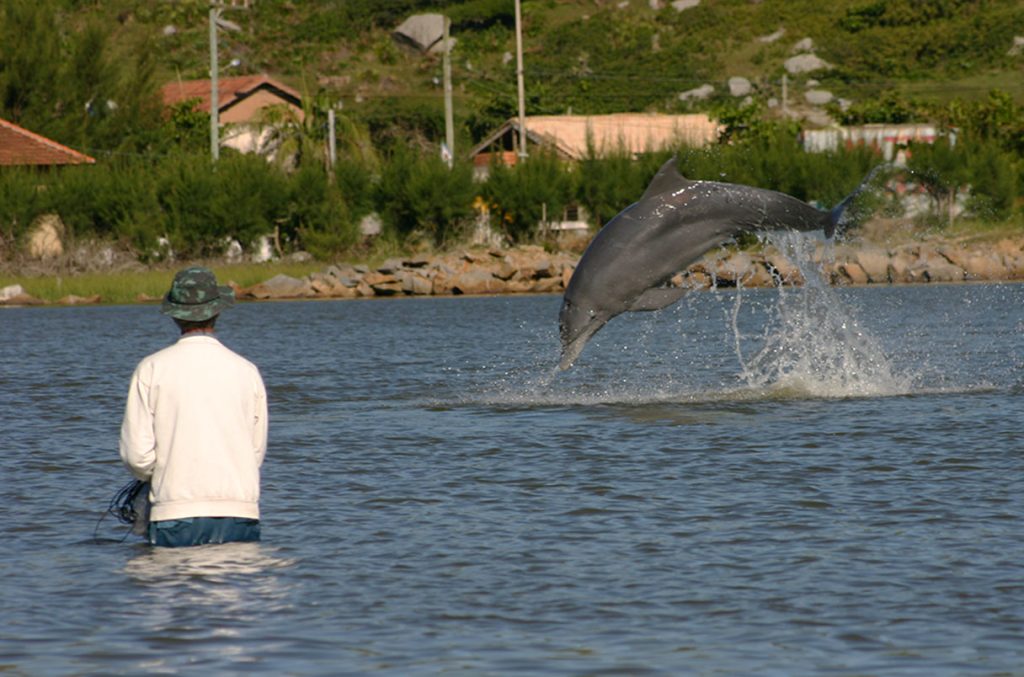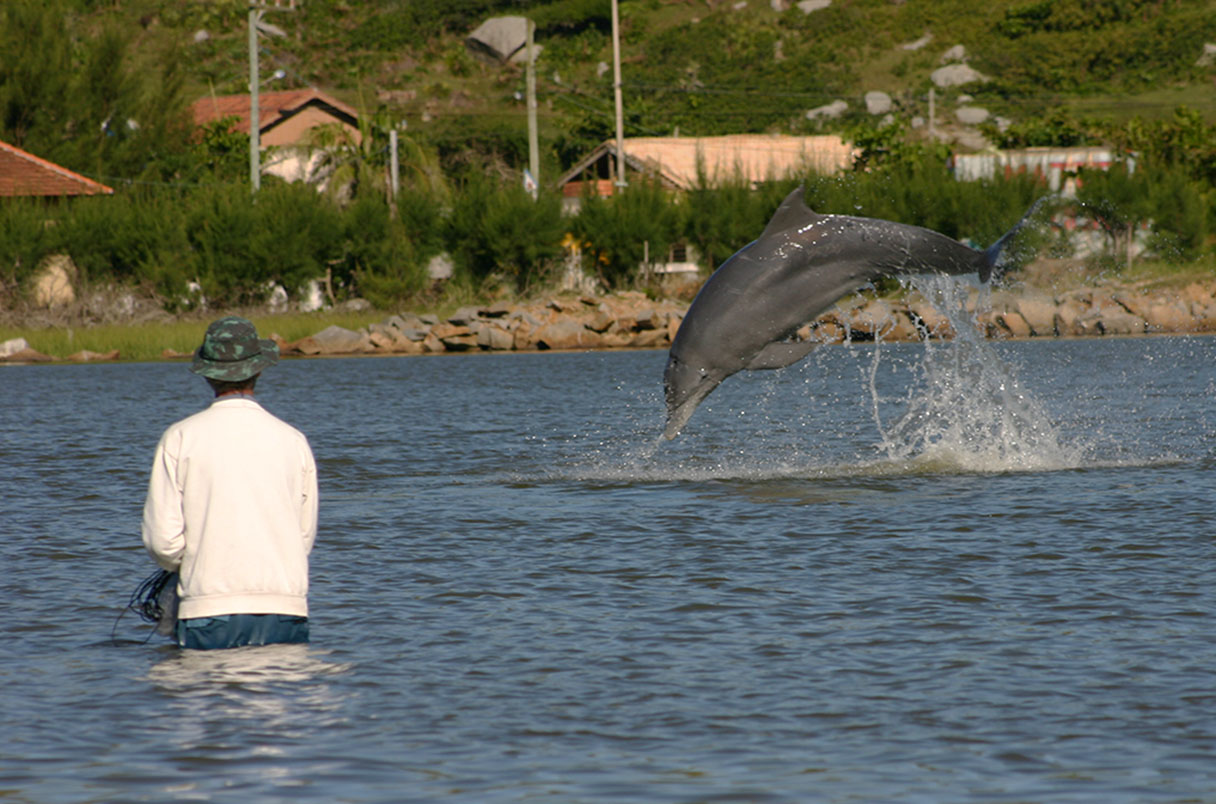Article Courtesy: science.org | By: Virginia Morrell | Originally Published: 1/30/23 | Click here for original article.

Above: Teamwork. A fisher in Laguna, Brazil, will throw his net when a dolphin gives him the right cue. Photo: FÁBIO G. DAURA-JORGE
For more than 140 years, fishers in southeastern Brazil have formed an unusual partnership with local dolphins. In the small coastal city of Laguna, men wait for the marine mammals to swim up a narrow lagoon, herding silvery mullet from the Atlantic Ocean into shallower waters. As soon as the fishers spot a dolphin slapping its tail, lifting its head, and diving deeply, they race into the water with their nets.
Now, a new study suggests the dolphins are willing partners in this collaboration. They pay close attention to the humans, timing their actions to maximize their catch. The animals may even be guiding the people, says Simon Ingram, a marine biologist at the University of Plymouth who has studied the relationship between humans and dolphins in Brazil but was not involved with the current research. Over the years, dolphins have been showing the fishers “where to stand and when to get ready to throw their nets” in the murky waters, he says. “It’s almost as if the dolphins are training the humans.”
To conduct the study, Mauricio Cantor, a behavioral ecologist at Oregon State University, Corvallis, and colleagues interviewed 177 fishers in Laguna. The conversations revealed what they looked for in a good dolphin fishing partner, preferring cooperative dolphins that reliably pointed them to mullet. The researchers also recorded nearly 5000 mullet catches from 2018 to 2019, and for the first time, investigated whether the dolphins benefited from this partnership as well.
“We knew the fishers were observing the dolphins to determine when to throw their nets,” Cantor says. “But we didn’t know if the dolphins were coordinating their behaviors with the fishers.”
Eighty-six percent of the fishers’ catches came from “synchronous interactions” with dolphins—that is, perfectly timed behaviors by both dolphins and humans that resulted in both catching fish, the team reports today in the Proceedings of the National Academy of Sciences. The fishers were 17 times more likely to catch mullet when dolphins were present; further, fishers caught nearly four times as many fish when dolphins were in the lagoon as when dolphins weren’t—but only when they matched their casts with the dolphins’ cues.
As much as the fishers were watching the dolphins, so, too, were the dolphins watching the fishers, the team found. Both species must time their actions correctly to catch fish. The people wait with their nets at the ready for a dolphin to approach closely (between about 12 to 4 meters). When a dolphin sees a ready fisher, the marine mammal will give a cue, usually that deep dive, that tells the fisher the mullet are right there and it’s time to cast their net. Sometimes, either dolphin or fisher will respond incorrectly, and neither catches fish. Yet, the scientists report that of nearly 3000 recorded fishing attempts, nearly 46% were successful, with dolphins and fishers acting in synchrony.
The study “shows convincingly that when both species get their timing right, the fishers catch more mullet, and the dolphins emit more terminal buzzes”—the special echolocation clicks that indicate a successful hunt, says Claire Spottiswoode, a behavioral ecologist at the University of Cambridge who was not involved in this research.
To ensure this precision, fishers must understand the dolphins’ cues, learning them over time, Cantor says. “The dolphins are almost like teachers.”
Such collaboration may only be possible because both humans and dolphins are cooperative species, says Stephanie King, a behavioral ecologist at the University of Bristol. She speculates that the relationship may have evolved after bolder dolphins observed fishers casting nets to catch mullet and used this as an opportunity to catch more mullet themselves.
Other populations of dolphins have also been known to cooperate with human fishers, herding fish toward shore or into nets off eastern Australia, Mauritania, and Southeast Asia. But these practices have either disappeared or are in decline.
The same fate likely faces the Laguna dolphins if the mullet numbers, which have dropped over the past decade because of overfishing, continue to decline, Cantor says. The practice may escape such a fate, if Brazil designates this dolphin-fisher relationship a cultural heritage, as the scientists propose. “Without mullet,” Cantor says, “this partnership will end.”






